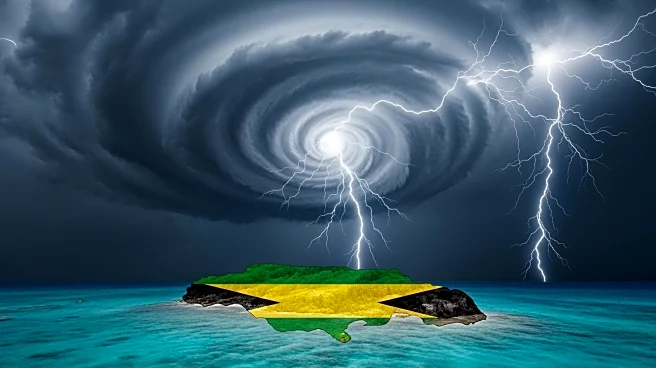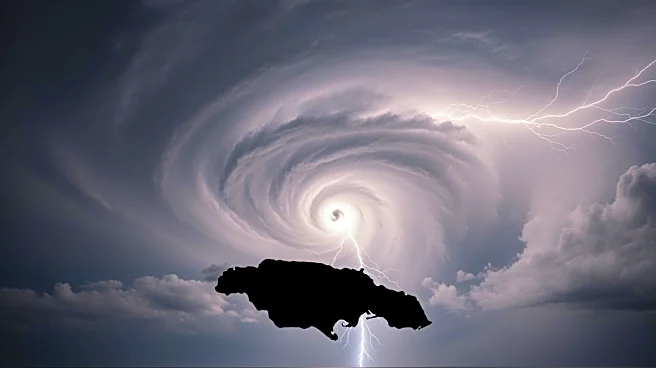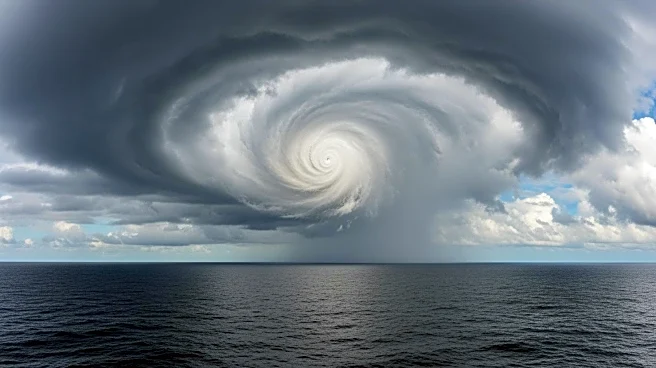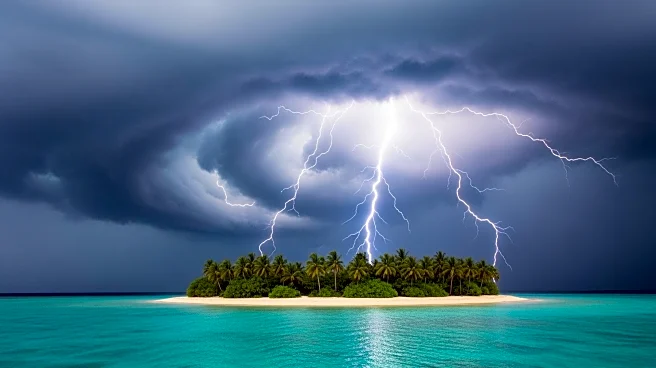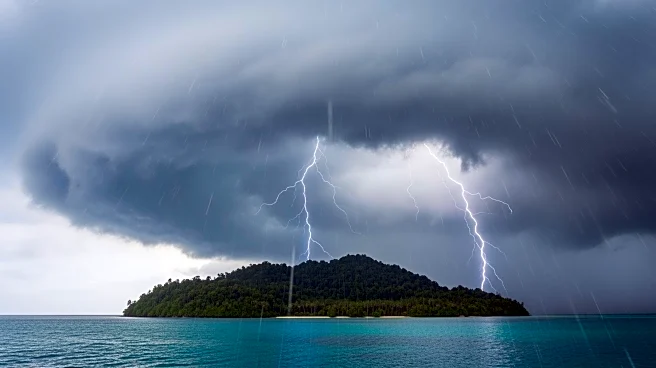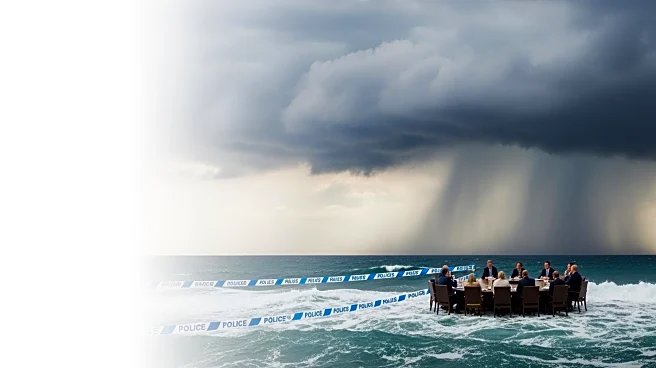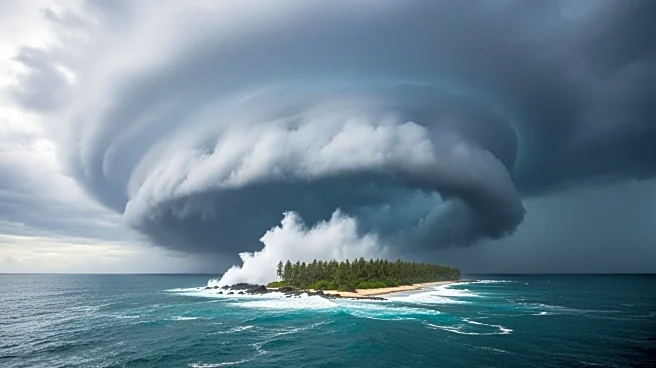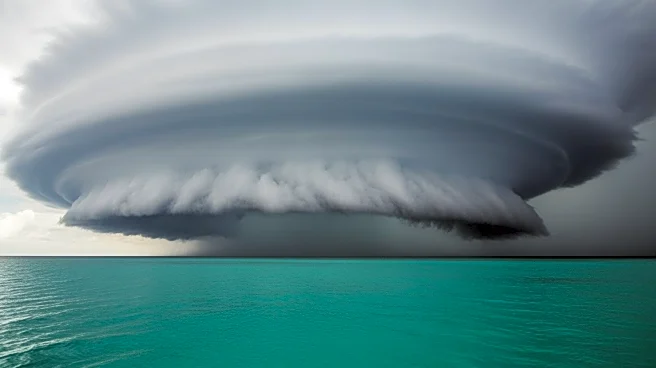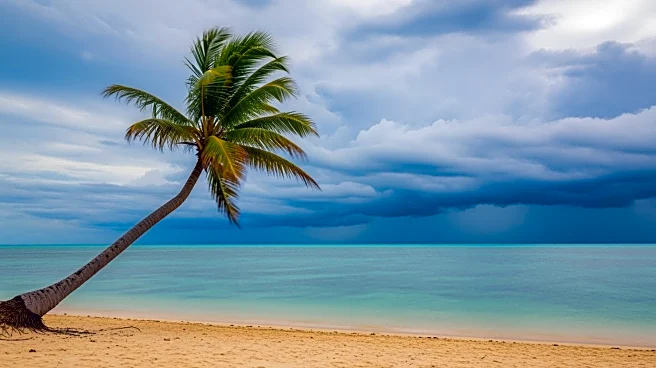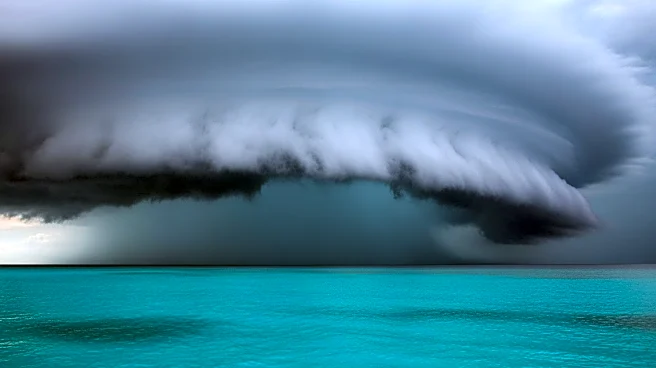What's Happening?
Hurricane Melissa has rapidly intensified into a Category 1 hurricane, posing a significant threat to Jamaica and parts of the northern Caribbean. The National Hurricane Center (NHC) reported that Melissa's
maximum sustained winds have reached 75 miles per hour. The storm is currently located about 145 miles southeast of Kingston, Jamaica, and is expected to strengthen further. Meteorologists have warned of catastrophic rainfall, dangerous flooding, and destructive winds. Jamaica, Haiti, and the Dominican Republic are on high alert, with officials warning of up to 35 inches of rain in some areas, which could lead to life-threatening floods and landslides. Jamaican authorities have activated nearly 900 shelters and closed major transportation hubs in anticipation of the storm's impact.
Why It's Important?
The intensification of Hurricane Melissa is a significant development in an already active Atlantic hurricane season. The storm presents a severe danger to millions of people across Jamaica, Haiti, and the Dominican Republic. The potential for record-breaking rainfall and strong winds could lead to widespread power outages, infrastructure damage, and hazardous conditions. The storm's impact is particularly concerning for regions still recovering from previous storms. The NHC has forecasted that Melissa could become one of the most powerful hurricanes to strike Jamaica in decades, drawing comparisons to Hurricane Gilbert in 1988. The storm's slow movement over warm sea waters is expected to allow it to intensify further, potentially reaching Category 4 status.
What's Next?
Meteorologists and emergency planners are closely monitoring Hurricane Melissa for further changes in intensity and trajectory. The storm is expected to approach Jamaica by Monday or Tuesday, with forecasts indicating it could bring winds exceeding 150 mph. After impacting Jamaica, Melissa is forecast to pass over eastern Cuba and then threaten the Bahamas, Turks, and Caicos Islands later in the week. While the storm's exact track could cause it to veer northeastward after Cuba, most models suggest that Florida and the mainland United States will not be directly impacted. However, rough surf and coastal erosion are expected along parts of the U.S. East Coast.
